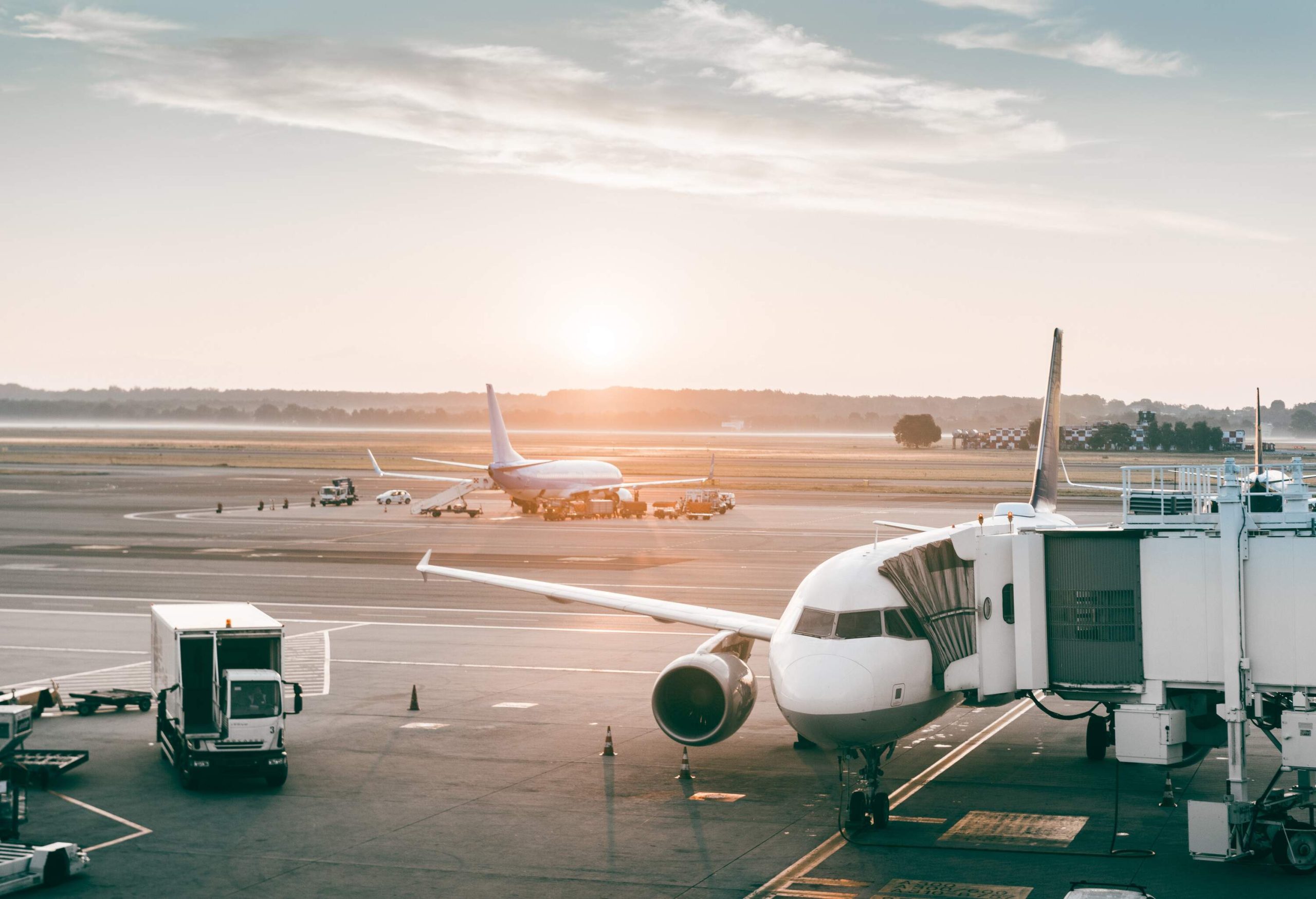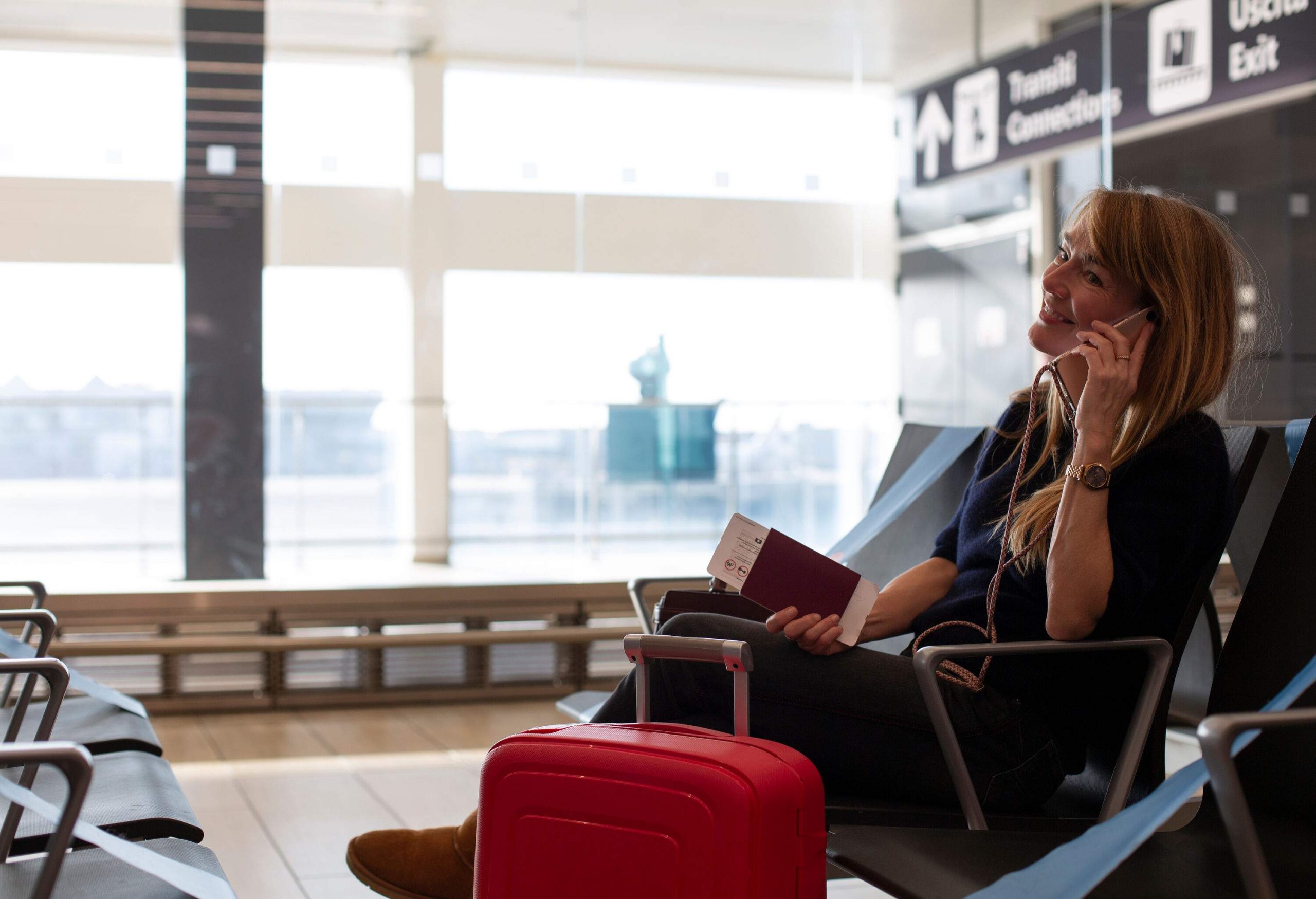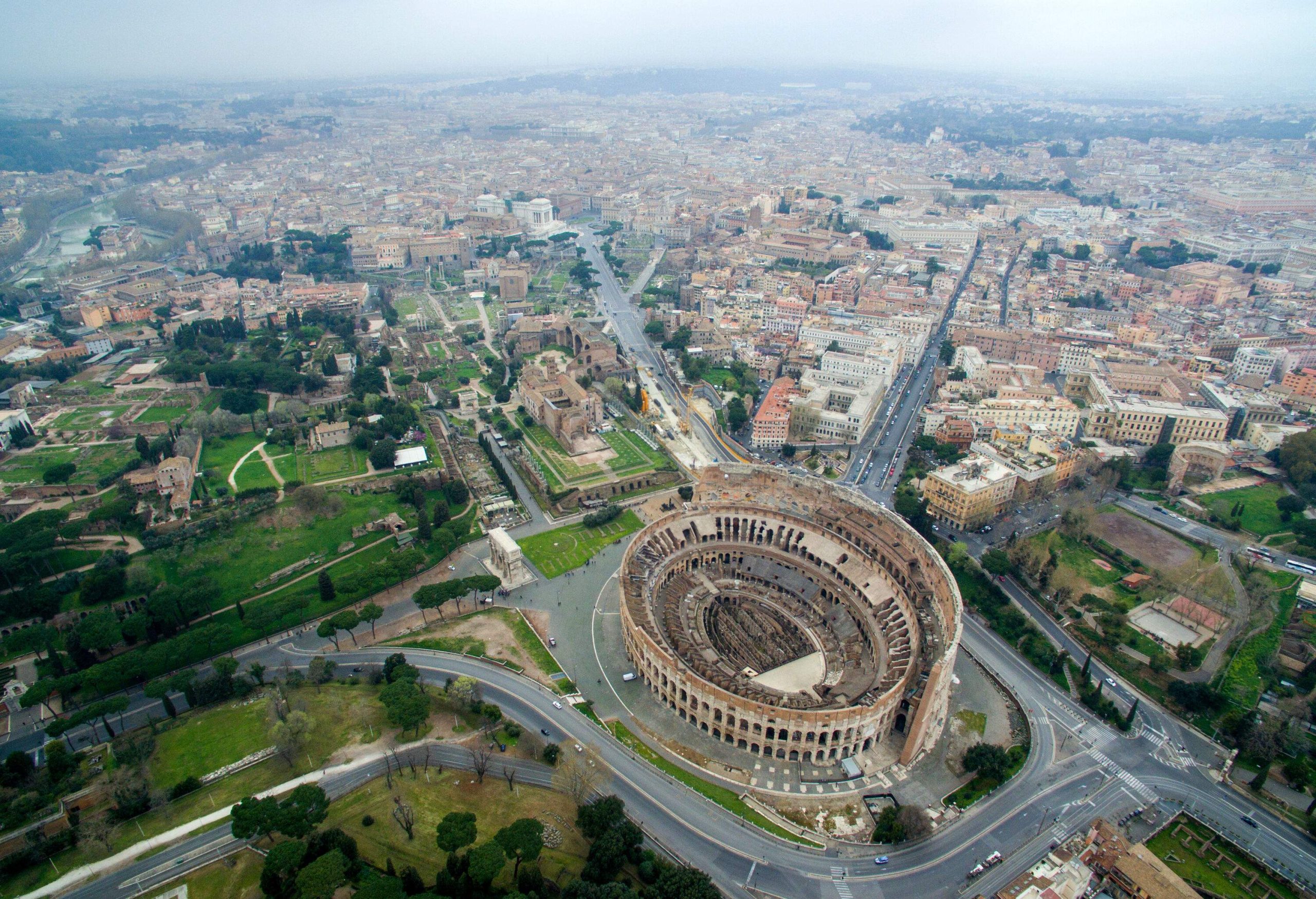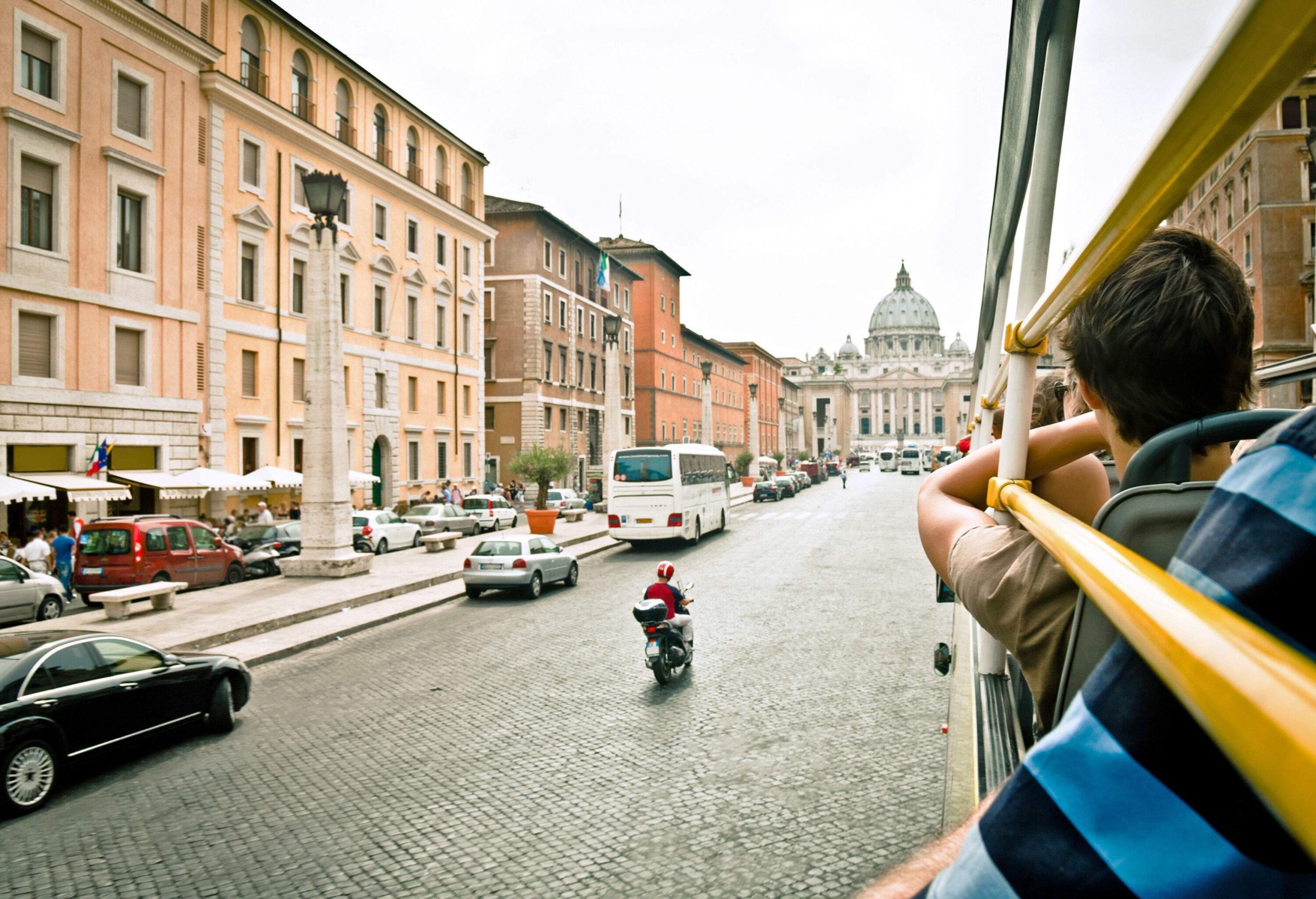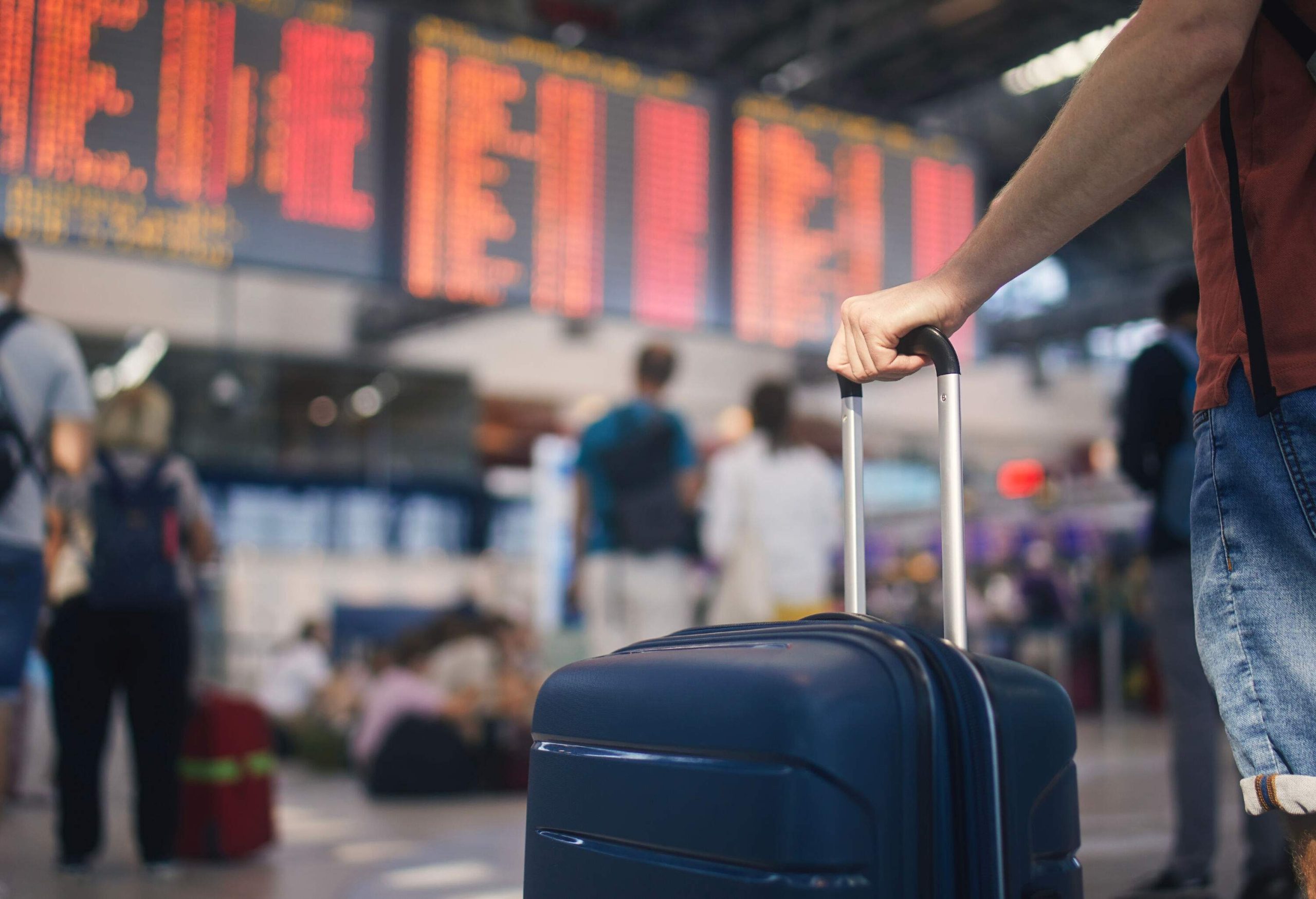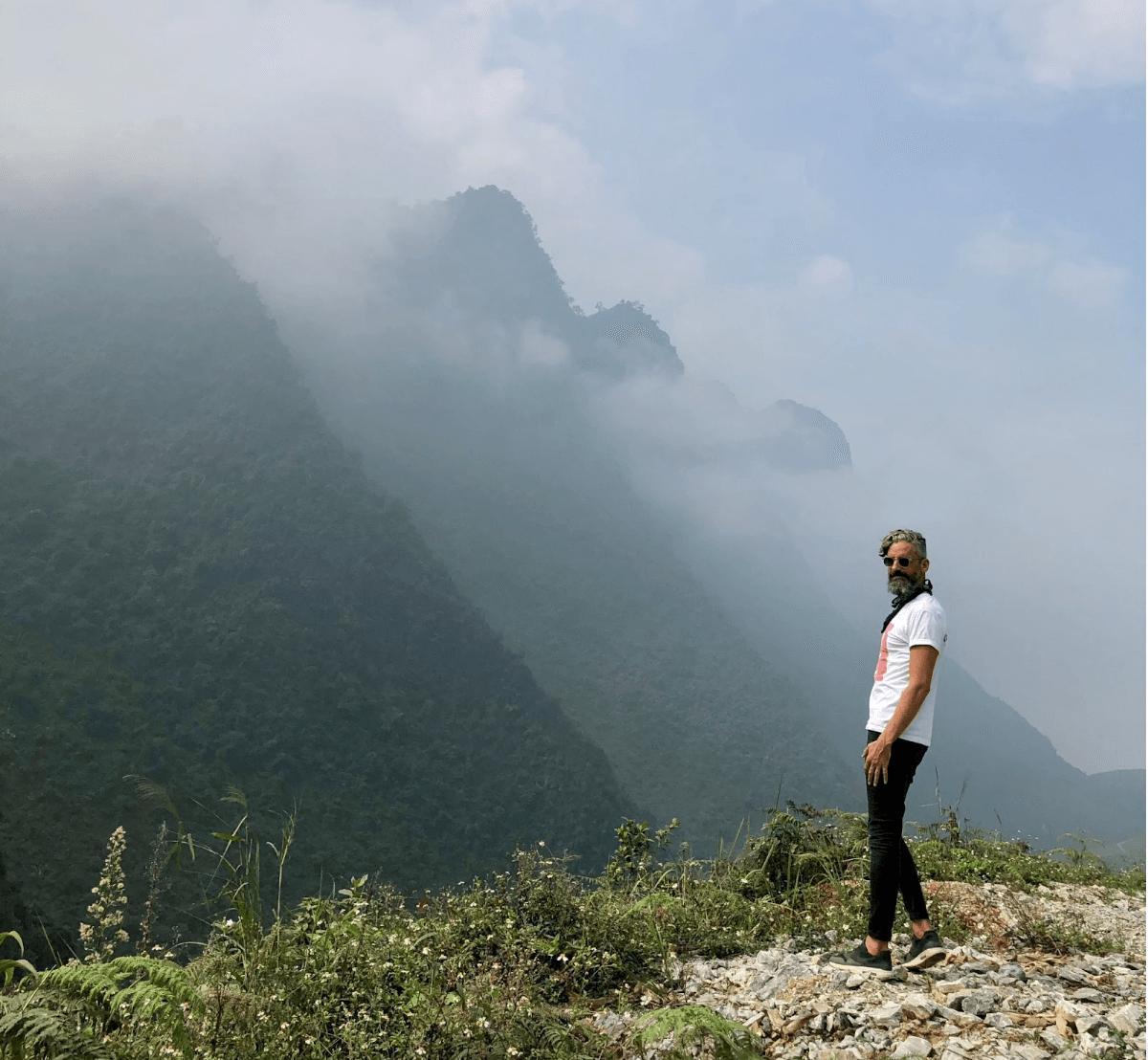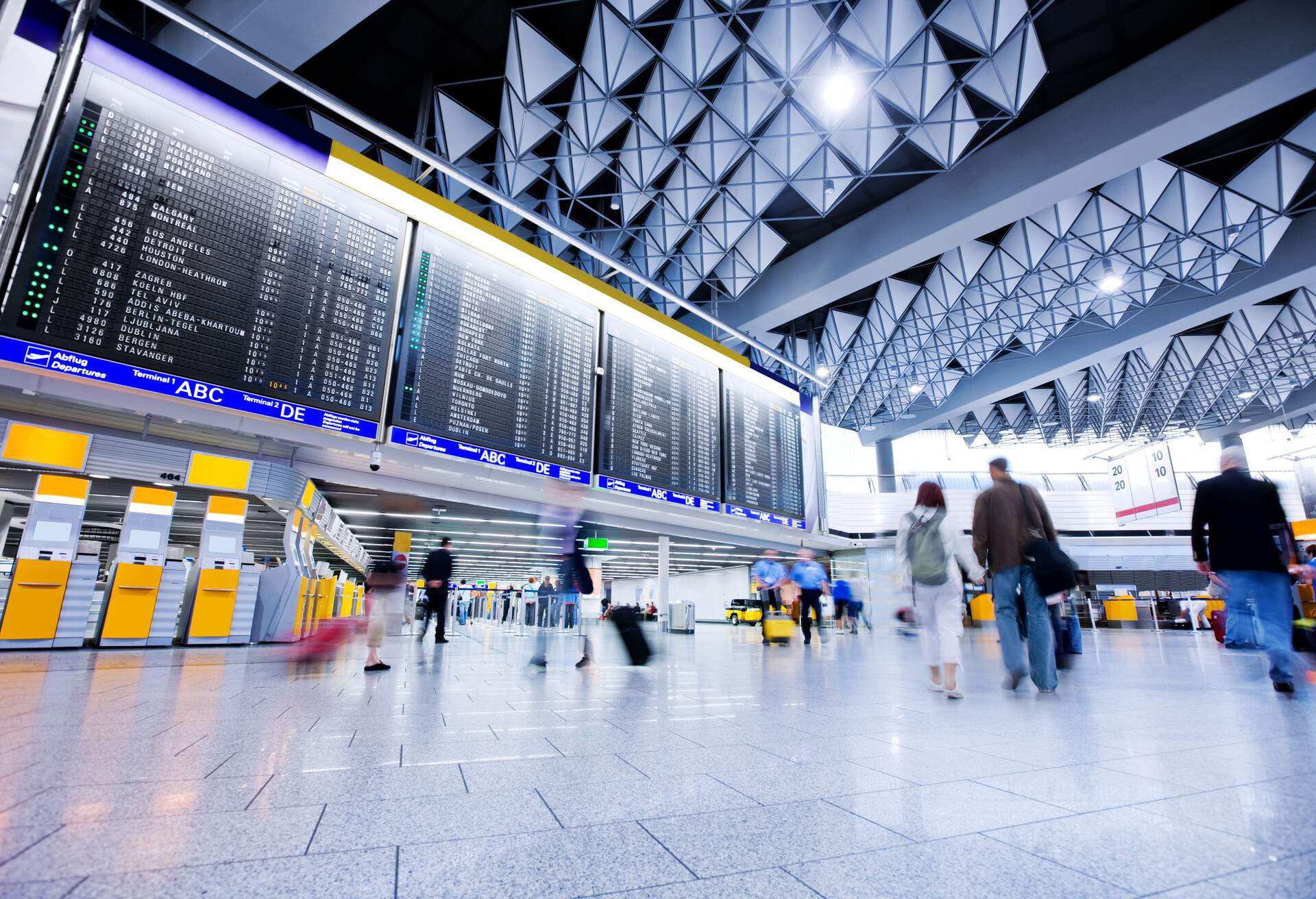The Eternal City, Italy’s capital, is one of the most popular tourist destinations in the world. From its rich history and extraordinary monuments to the unbelievable food and reliably lovely weather, it’s not hard to understand why. In 2023 alone, just shy of 45 million people passed through the two main Rome airports. Of those, some 35 million were on international flights.
Which is the best Rome airport for you will depend primarily on where you’re flying from or to. Although there are of course other factors to consider – where you’re staying and when you’re flying. Or perhaps you’re simply transiting through on the way to another destination. This guide walks you through both of Rome’s main airports so you can make the right choice about which to use.
Leonardo da Vinci-Fiumicino – FCO
Officially called Leonardo da Vinci-Fiumicino, Rome’s main airport is commonly known as Rome-Fiumicino for the small town it’s located in. It’s also Italy’s busiest airport, just beating out Milan Malpensa Airport for destination, flight and passenger numbers. A hub for international flights, layovers and connections, 2023 saw some 40 million passengers pass through its gates.
Fiumicino is currently served by 111 airlines flying domestically and internationally to and from 208 destinations across 76 countries.
FCO terminals
With so many airlines and destinations, it’s no surprise Fiumicino has four terminals – although things aren’t quite that simple. Confusingly, they’re called Terminals 1, 2, 3 and 5, as Terminal 4 has not yet been built.
Even more confusingly, only two are currently functioning – Terminal 1 and Terminal 3. Terminal 2 has been permanently closed. Terminal 5, previously the main hub for US flights, is undergoing extensive (and seemingly never ending) renovations.
While this undoubtedly seems complicated and convoluted, on the plus side it has made things easier for travelers. Especially so if you’re transferring between terminals, as they’re just a five-minute walk apart. There are also free shuttle buses should you have too much baggage to carry.
When it comes to the actual airport experience, you’ll find few better airports anywhere. Fiumicino has been voted the best airport in Europe with more than 40 million travelers for six years running by the Airports Council International (ACI). The facilities across both terminals suggest why.
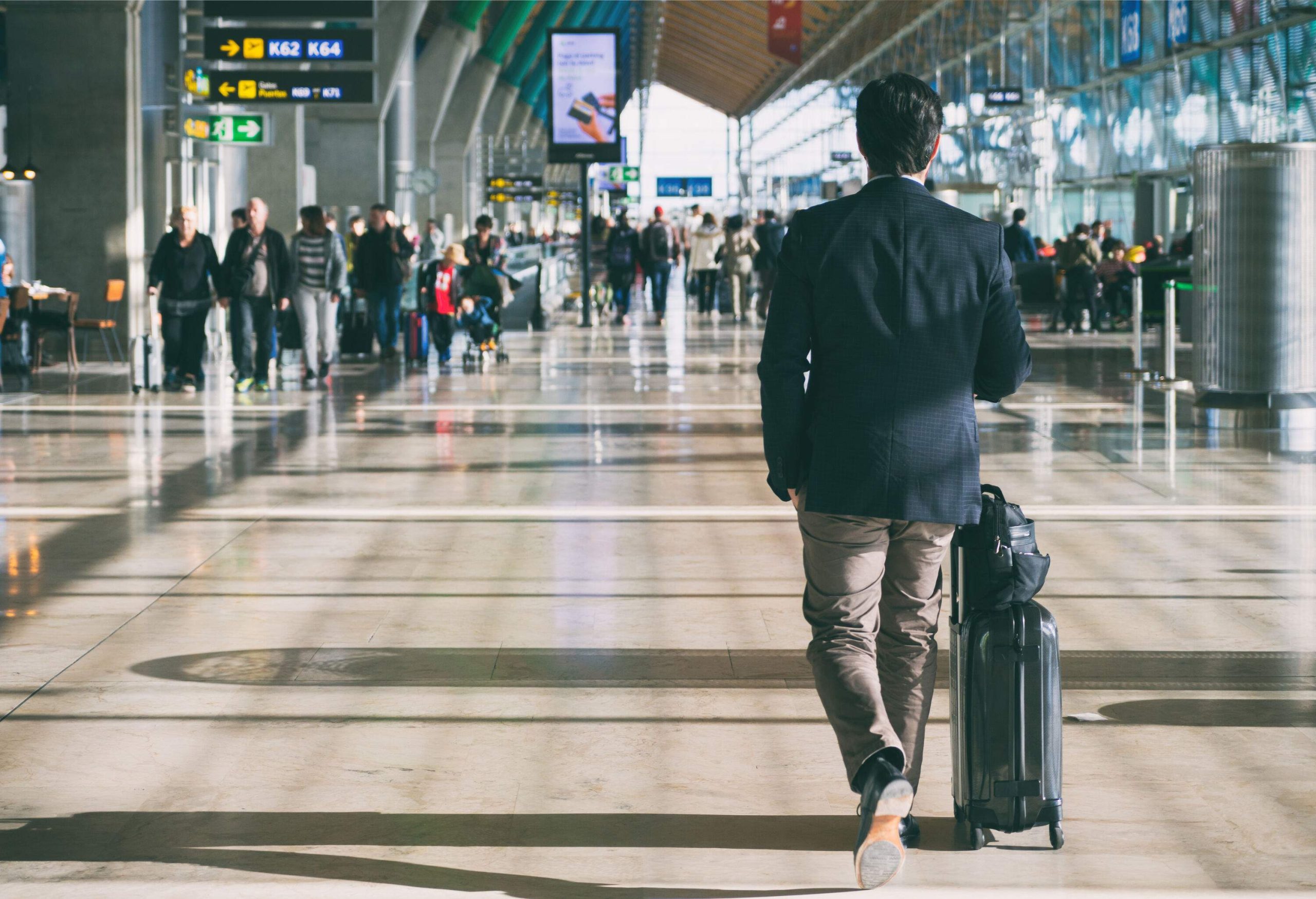
In Terminal 3, the Made in Italy shopping center is home to 50+ shops selling authentic Italian goods. It’s a great place to wander and pick up all the gifts you forgot to buy in Rome. I personally love Terminal 1 primarily for its Eataly food court, newly opened in 2022. Now it’s a regular stop off where I always make time for a slice of the Buffalo Mozzarella pizza or bowl of Amatriciana. If you’re so inclined, the Vini e Aperitivi bar serves gorgeous wine and appetizer combinations too. And if you’re looking for discount shopping, Terminal 1 is also home to the largest Aelia duty-free zone in the world!
FCO airlines
Fiumicino is the home of ITA, Italy’s flagship airline (formerly Alitalia). The biggest carrier at the airport, it operates between 50 routes out of Terminal 1. Interestingly, the five most popular destinations are all domestic or to Spain, proving the airport's position as a central hub of Mediterranean tourism. The other major T1 carriers are all low-cost airlines – stalwarts like WizzAir, RyanAir, Eurowings and Vueling serving mostly European destinations.
Terminal 3 is the bigger of the two and serves the majority of long haul flights, including the US. American Airlines, Air Canada, Delta, United, British Airways, Emirates and Etihad all fly in and out of Terminal 3. Fiumicino is the best airport to fly into Rome from the US.
FCO location

The town that gives Fiumicino its name is located 14 miles southwest from the Colosseum as the crow flies. That’s around 25 miles and up to an hour by road, depending on traffic. The setting is actually quite spectacular, as it’s right on the coast looking over the Tyrrhenian Sea. If you can book a window seat on your flight you’ll get fantastic views both arriving and departing.
I’ve always found taxis to and from the airport to be a bit of a lottery. There are fixed fee regulations in place for journeys to the city center. But more than once I’ve had drivers refuse to acknowledge it and charge far more than they should. As is so often the case then, dedicated transfer services are the better option.
There are several options for taking the train into Rome, all leaving from its train station a 10 minute walk from the terminals. Travel times vary wildly so it’s important to choose the right one.
- Leonardo Express Train – My choice is the non-stop Leonardo Express. It runs every 15 minutes and takes 32 minutes to reach Roma Termini main station in the city center. Tickets cost €14 (around $15) each way.
- FL1 regional trains – Departing every 15 minutes on weekdays and every 30 minutes on weekends, the regional trains take far longer to get into Rome. At €8 they’re a little cheaper but don’t go to the main Termini station. Instead, they’re a good option if you’re staying in Rome’s outskirts, for example in Trastevere, Ostiense, Tuscolana or Tiburtina.
- Frecciarossa trains – If you’re traveling beyond Rome to the likes of Florence, you’ll need to take the Frecciarossa, ‘red arrow’. Ultra fast, ultra comfy, they’re the best way to travel and depart several times a day.
- Bus – There are numerous bus companies operating routes from and to terminals 1 and 3. Travel times can be up to an hour to the city center. But they’re cheap, regular and you can usually buy your ticket on board.
Rome-Ciampino – CIA
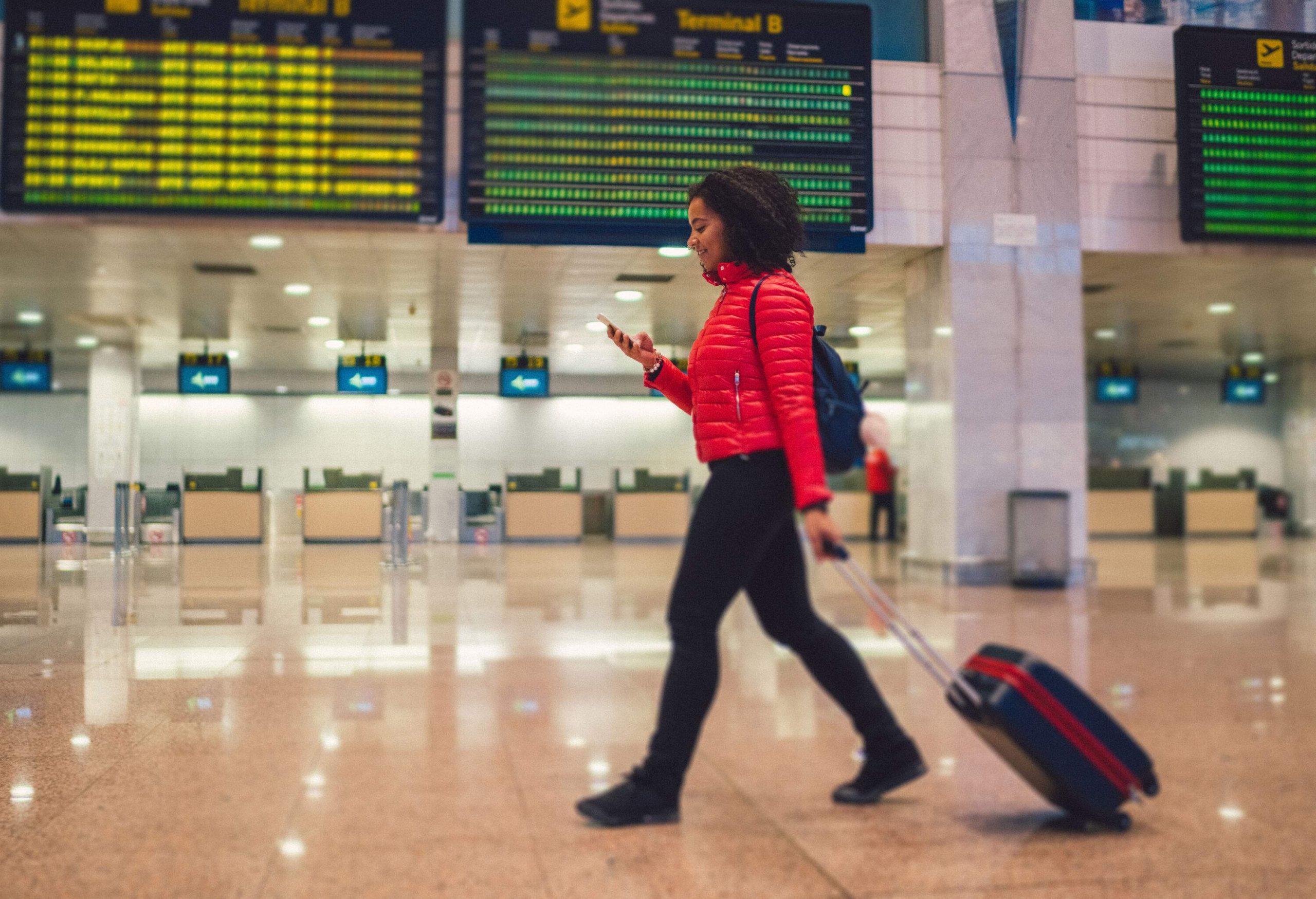
The second major airport in Rome is Ciampino, or Rome–Ciampino International Airport “G. B. Pastine" to use its full title. It’s named for the famed Italian airship commander Giovan Battista Pastine who served in World War One. (With ‘CIA’ it also has a very cool airport code!) A hub for low-cost airlines, Ciampino is also a commercial and military airport, but operates nowhere near the scale of Fiumicino.
In 2023, it handled just under four million passengers flying to and from Rome. Of these, around 3.5 million passengers were on international flights. It’s currently served by 27 airlines flying to 122 routes across 26 countries, but many of these are charter and military flights. In reality it operates with just a handful of commercial carriers.
Closer to the city center than Fiumicino, if you’re coming from Europe it's the best airport to fly into Rome. It’s also small and easy to navigate with just one terminal serving all flights, so you don’t need to arrive hours before departure. That does mean its facilities and amenities aren’t as impressive as its bigger sibling airport.
CIA terminal facilities
You’ll find cafés, pizza and the usual fast food outlets, but nowhere nice to sit and eat after passport control. My preference is the cafe in departures before security where the coffee is particularly good – this is Italy after all.
Shopping is far better with all the luxury brands from Burberry to Valentino vying for your euros. The Bufala di Fattorie Garofalo food store is a great place to pick up some fine local foods for gifts. Ciampino is closed from midnight to 4:00 am, meaning you can’t spend the night there. Instead, you’ll need to book somewhere to stay nearby.
CIA airlines
Ciampino is the home of budget airlines. Previously a charter and military airport, its fortunes were waning until a raft of low-cost carriers took interest. Now, the biggest carriers are Ryanair, VistaJet and Wizz Air, all serving European routes. London Stansted is the most popular destination.
CIA location
Ciampino is just eight miles as the crow flies from the Colosseum, making it the more convenient Rome airport. Southeast of the city center, it offers lots of transport options for an easy commute. Although it’s not actually quicker to the city center than Fiuminico.
That short distance makes a taxi ride more viable. It should take around 30-40 minutes and the current fixed fee stands at 31 euros (around $33). If you do take a taxi, make sure it’s licenced and fix the price before you agree to the ride. The big advantage of a taxi is that it can drop you right to your door, or hotel lobby. Rome’s streets are steep, often cobbled, with narrow sidewalks meaning they’re no fun to drag baggage around, carry-on or checked.
As always, I prefer the public transport option. At Ciampino Airport, it’s easy, regular and cheap – three of my favorite words when traveling:
- Ciampino Airlink – My choice is this combined bus and train trip in one ticket, costing just €2.70 each way. Hop on the bus at the airport entrance for the short non-stop ride to Ciampino town station. Here, the trains to Roma Termini main station depart every 20 minutes or so, seven days a week. This city center commute usually takes around an hour in total.
- Bus – As with Fiumicino airport, there are several bus services running from and to Ciampino. If it weren’t for Rome’s legendary traffic, it would likely be the fastest way into the city. In reality it usually takes at least an hour, comparable to Airlink, but costs €6 (around $7) each way. And if you’ve got a lot of baggage, it’s an absolute no-no (buses are small and space limited).
- Metro – The last option is the metro. Convenient if you’re staying near a stop on Metro Line A before Roma Termini, like Esquiline (Manzoni) or San Giovanni. From the airport entrance, take the bus to Anagnina metro station – beware it departs only every 30 or 40 minutes. From Anagina station, it takes 15-20 minutes depending on where you get off. Tickets are €1.20 each way, with an extra €1.20 for each large piece of luggage.
What’s the best Rome airport to fly into?
With only two major airports in Rome, it’s not really a question of which is the best to fly into. For sheer convenience, Ciampino wins out as the closest airport to Rome city center. But then that’s only for those flying budget carriers around Europe.
If you’re flying between Rome and the US or other long haul destinations, Fiumicino is your only viable option. But what an airport it is! Globally connected, modern, clean and with world-class facilities, there’s little not to like. And although it’s a little further out than Ciampino, the commute times into the center aren’t that different.
Conclusion
Compared to iconic destinations like London with its six airports, you could argue Rome is underserved with just two. Especially if you factor in Ciampino’s lesser role and limited destination count. The big difference is that Italy is not as reliant on its capital as a travel hub. Cities like Venice, Milan and Naples all well served in their own right – and Rome’s airports still handle 45 million travelers a year.
You can find out more about Italy’s and other airports around the world in the KAYAK Airport guide.
How was this guide created?
I seem to spend half my life flying around Europe, chasing stories and vacations. In the last five years, I’ve flown to few places more than Italy and in particular, Rome. It’s a doorway not only to the Eternal City but also to the awesome landscapes of Lazio and Tuscany. This guide shares what I’ve learned on those trips, in particular on how the airports have changed, from old terminals closing to new facilities opening.
Disclaimer: Prices and information are correct as of 02.08.2024 and may vary with time.

